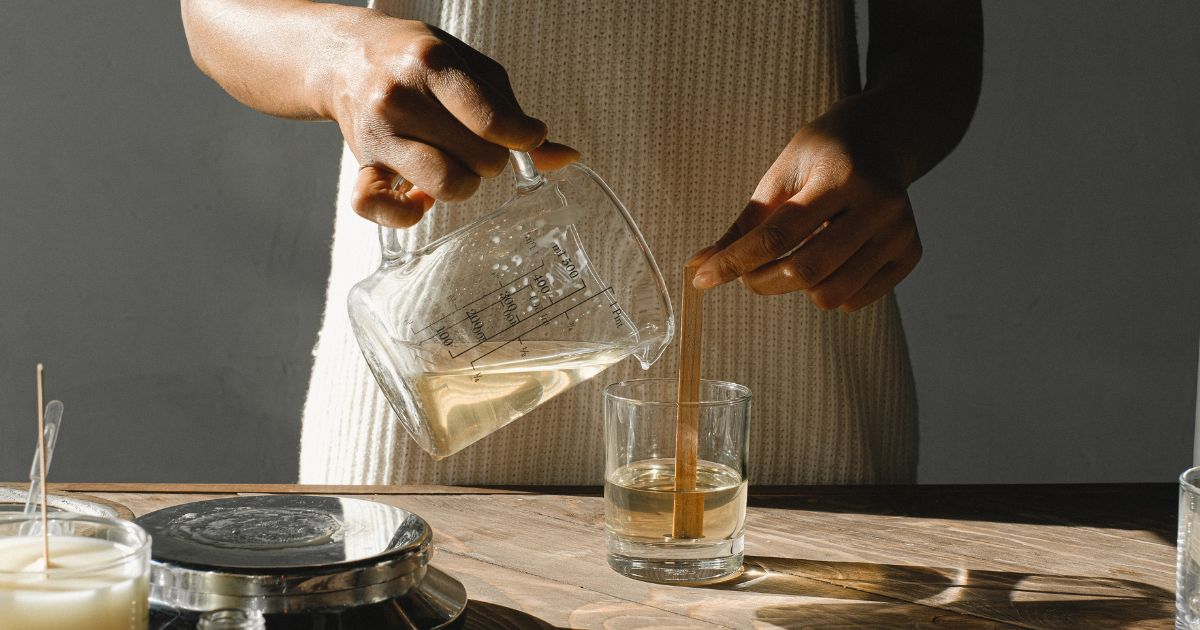想詢問,我做好的香氛蠟燭,點燃時都會燃燒不平均,導致出現燭芯有漏洞,該如何改善這部分的問題?

Worried about the safety of commercial scented candles and the potential carcinogenic risks? Many well-known fragrance brands indeed add ingredients like paraffin to reduce costs or significantly increase scent throw. The safest way is to make your own! DIY scented candles allow you to know exactly what goes into them. This DIY scented candle guide compiles tutorials from YouTube and various online sources, ensuring a fail-proof experience. Even for those less skilled in crafting, this DIY scented candle guide promises success! Let's get started!
(Read more: Three Ways to Fix Candle Tunneling in Three Minutes – Aerix Co)
Essential oils are categorized into top, middle, and base notes based on the speed of their evaporation, which is related to their characteristics. Here are some common essential oils for each note:
Top Note Essential Oils:
Middle Note Essential Oils:
Base Note Essential Oils:
The typical recommended ratio for top, middle, and base note essential oils is 3:2:1 or 2:2:1. However, when creating blends for DIY scented candle, there isn't a strict rule, and it's not necessary to adhere to these ratios. The key is to avoid using only top note essential oils in your blend.
Blending essential oils is a big topic. But remember the rule of thumb is : For pure essential oils, don't exceed 10%, i.e., for 300g soy wax, keep the total essential oil weight under 30g. Choose your essential oils based on personal preferences or buy pre-blended essential oils. Be cautious of alcohol content in some blends, which may not be suitable for candles. Citrus oils and top-note essential oils, which often evaporate faster, should be balanced with middle and base notes.
Secure the wick using a small amount of wax. Use pre-waxed wicks can be much easier for beginners, as unwaxed ones may not stand upright.
Trimming prevents excessive burning and large flames, reducing soot. Cut any excess wick length.
(Read more: Why I Can’t Smell My Scented Candle? Avoid These Five Common Pitfalls! – Aerix Co)
The above is a detailed guide on DIY scented candle. DIY scented candle is not difficult at all as long as you choose good ingredients, measure the quantities beforehand, and carefully observe the melting process of soy wax. Some people prefer using enamel pots in winter to slow down the cooling process, making the operation easier.
Many DIYers may encounter the issue of their homemade essential oil candles having no scent. In the next article, we will provide a detailed explanation for this problem.
If you find DIY scented candles too challenging or lack the interest to try it yourself, buying ready-made ones is certainly an option! The exclusive collaboration scented candles from Aerix and EYECANDLE use a special blend of plant wax for stable and safe burning. There are two options available: "Day In," which features a fresh citrus scent, and "Day Out," offering a soothing woody aroma. Perfect for both winding down at the end of the day and starting a new one!
Commentaires
想詢問,我做好的香氛蠟燭,點燃時都會燃燒不平均,導致出現燭芯有漏洞,該如何改善這部分的問題?



